[dropcap]W[/dropcap]hen people think of the Japanese military in World War II, they often picture fearsome Zero fighters or soldiers battling to the death—not tanks and armored cars wreaking havoc on unsuspecting enemies. That impression tends to be reserved for the Germans. Japan’s World War II armored force was never an important component of the Imperial war machine and its performance throughout the war was mediocre at best.
But why? Japan was among the first world powers to experiment with armored vehicles. It even put into practice combined-arms warfare years before the Germans did. Then, through a mix of officer corps infighting, strong personalities, and shifting battlefield priorities, Japan squandered all that accomplishment.
When Heinz Guderian—Germany’s legendary Blitzkrieg architect and author of the pioneering 1937 armored warfare book Achtung-Panzer!— searched the world for examples of tank development after World War I, he neglected to look eastward at Japan, one of the interwar period’s leading nations in armored warfare.
Although not a direct participant in the World War I meat grinder, Japan, like many other nations at the time, had dispatched military observers to the Western Front. When the British Mk I, the world’s first tank to serve in battle, cumbersomely rolled across no-man’s land at the Somme, observers telegraphed news of the contraption back to Tokyo.
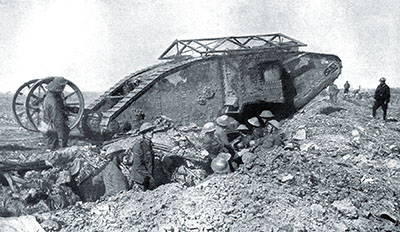
The Imperial Japanese Army quickly recognized the tank’s revolutionary potential and, as early as 1917, began discussions about purchasing foreign reference models. On October 24, 1918, less than a month before fighting ended with the Armistice, a British Mk IV “female” tank (a variant armed with five machine guns but no cannon) arrived at the Japanese port of Yokohama, destined for the infantry school in Chiba Prefecture. Serious study of the tank began late the next year, when the school received its second shipment: six British Mk A Whippets and 13 French Renault FT-17s.
Aside from the new weapon’s technical aspects, the Japanese took note of the potential significance of the new doctrine it represented: armored warfare. The Army Technical Headquarters, created as a part of a 1919 reform to oversee weapons research and development, stressed the importance of employing “mechanical power in addition to existing human and animal powers for the operation and transportation of weapons.” This idea generated serious interest among more open-minded infantry officers. By 1921, Japan’s Army War College in Tokyo began hosting extracurricular lectures on armored warfare during the Great War, and the Japanese word for tank—sensha, literally “battle car”—was coined.
The tank was not the only new weapon generating interest. While the Great War was a tragic tribulation for Europe, for Japan it was an infinite treasure chest of technologies, doctrines, and lessons. Dozens of investigation committees and technology boards emerged to research submachine guns, radio communications, air power, national mobilization—anything to benefit Japan’s military ambitions. But compared to other topics, tank development did not receive the highest priority.
In 1925 that changed. Minister of War Kazushige Ugaki implemented a major disarmament program for the army aimed at reduction and modernization, or quality over quantity. The army disbanded four infantry divisions and several army schools and hospitals, reallocating the freed resources to expand the army’s air corps and anti-aircraft corps and establish a professional tank corps.
On May 1, 1925, the Japanese armored force came into being with the formation of the 1st Tank Battalion in Kurume and the Infantry School Tank Battalion in Chiba. But the two battalions—each consisting of five now-outdated Mk A Whippets and Renault FT-17s—were experimental units not capable of actual combat. In addition, the fledgling tank corps faced heavy skepticism from army traditionalists, who questioned the potential of this preposterous invention.
Still, Japan’s first group of tank commanders and engineers remained undaunted, and its young officers were determined to build a modern armored force—from scratch if necessary. Knowing war with China, and possibly the Soviet Union, was only a matter of time, they were dismayed at Japan’s dependency on foreign imports, mostly from France. Calls for domestically produced tanks gained support from the head of the Army Technical Headquarters, who assigned Japan’s domestic tank project to 30-year-old artillery engineer Captain Tomio Hara from the Technical Headquarter’s Motor Vehicle Department; by June 1925, a design was in the works.
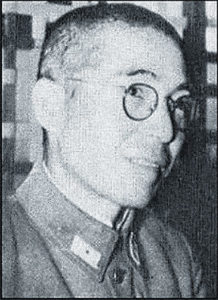
There was doubt in Captain Hara and his team’s chances for success; Japan’s previous experience producing military motor vehicles was limited to a four-ton truck and a three-ton tractor. Twenty months later, however, Hara proved skeptics wrong.
Experimental Tank No. 1 (designated the Type 87 Chi-I medium tank) had its flaws—at 20 tons, it was heavy and greatly underpowered—but since it passed field trials, the army gave its domestic tank program the go-ahead. Hara and his team immediately began to improve the design for mass production and, in 1929, completed the prototype for the Type 89 I-Go medium tank—the world’s first mass-produced diesel-powered tank and an army armored workhorse until 1942. In 1929, Japan also ordered its last batch of foreign-made tanks: 10 Renault NC-27s. From then on, everything would be Japanese-made.
Although Japan started out with less experience in armored warfare than its Western counterparts, that changed during its invasion of China. On December 17, 1931, the Japanese formed the 1st Tank Company—a temporary unit comprised of Renault FT-17s and NC-27s from the two existing tank battalions—and sent it to the battlefields of Manchuria. Their baptism by fire turned out to be anticlimactic. Led by one of Japan’s most promising tank commanders, 34-year-old Captain Shunkichi Hyakutake, the tanks encountered almost no resistance as they slowly rumbled behind the infantrymen. The company’s biggest action in the campaign, the Battle of Harbin, lasted only 17 hours before the ill-trained and unmotivated Chinese warlord troops abandoned the city.
Less than a month later, when anti-Japanese riots escalated into full-scale military confrontation in Shanghai, the Japanese army dispatched a second tank company—this time with five of the domestically produced Type 89 I-Gos alongside old Renaults—to reinforce the Imperial Japanese Navy’s besieged landing forces there. The 2nd Tank Company, commanded by Hyakutake’s colleague, Captain Isao Shigemi, 37, fared poorly in the dense city of Shanghai, where the Chinese infantry could easily check the tanks on the city’s narrow streets.
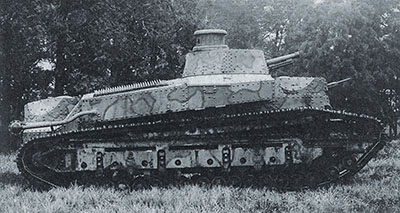
These unsatisfactory performances stemmed not from technical ineptitude but theoretical flaws. The interwar period had seen myriad hypotheses on how the tank should be used on the modern battlefield—but provided few opportunities to test them. Military theorists proposed drastically different doctrines and by the early 1930s, the philosophy of armored warfare largely fell into two schools of thought—British and French.
Many British military theorists, including Major General J. F. C. Fuller and Captain B. H. Liddell Hart, advocated for armored forces as an independent arm, with a mechanized combined-arms force as the backbone of a small, mobile army centered around the tank.
On the opposite extreme, most French generals (future general Charles de Gaulle excepted) insisted on keeping the World War I-style infantry-based army, using the tank primarily as a subordinate support arm. Instead of being concentrated, armored vehicles would be dispersed among frontline infantry formations. With Japan a major importer of French tanks, it was only natural for the Japanese to adopt the French infantry-support doctrine.
During the interwar years European powers could not determine which theory was correct, but when Heinz Guderian’s British-modeled, combined-arms Panzerwaffe finally clashed with the French army in 1940, the answer became clear.
Had Europeans looked eastward to Japan, they could have gotten their answer sooner. On February 21, 1933—as Japan secured its gains in Manchuria and continued slowly encroaching into China proper—it unleashed a major offensive, the Battle of Rehe, aimed at capturing the Inner Mongolian province just north of Beijing. Japan had the unprepared Chinese warlord army on the run, but Lieutenant General Yoshikazu Nishi, commander of the army’s 8th Division, realized his traditional infantry would not be able to chase down and rout the Chinese before they established a new line of defense. At his disposal, however, was the now-experienced 1st Tank Company, consisting of 11 Type 89 tanks and two Type 92 heavy armored cars, along with 100 or so trucks and armored cars from the Kwantung Army Automobile Group.
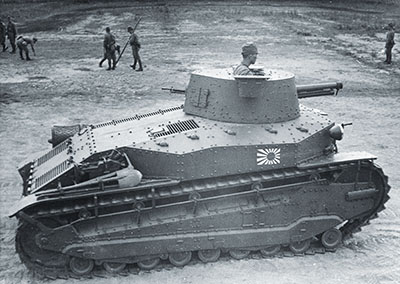
Nishi knew how to improvise. On March 1, he ordered Major General Tadashi Kawahara and his Battle Group Kawahara—an ad-hoc formation consisting of the 1st Tank Company, a mountain artillery company, an engineer company, a radio communications squad, and two infantry battalions—to exploit the initial breakthrough and advance ahead of the main Japanese force toward Chengde, the provincial capital, to disrupt Chinese defenses.
Battle Group Kawahara’s tanks and trucks pushed ahead on the Jinzhou-Chaoyang highway. The Chinese forces, still slowly retreating to the second defensive line, were caught completely off-guard. Their defenses collapsed, and the 1st Tank Company rode into an abandoned Chengde on March 4, covering a stunning 200 miles—roughly the distance from the Belgian border to Paris—within four days.
Whether General Nishi had read Liddell Hart’s combined-arms theory beforehand will probably never be known, but what he did impromptu on the bumpy roads of northern China put into action British military theorists’ dreams of tank-centered, combined-arms warfare doctrine. The result was a brilliant mechanized victory against traditional infantry and, significantly, one employed well before the Germans did.
The victory in Rehe finally gave pro-tank officers the leverage to push for concentrated armored formations and combined-arms mechanization. In March 1934, their calls were finally answered with the formation of the army’s 1st Independent Mixed Brigade. Consisting of two tank battalions, an infantry regiment, an artillery battalion, and an engineer company, the 1st Independent Mixed Brigade was Japan’s first operational combined-arms formation—and, for that matter, an early operational example of what Western powers had been testing mostly in peacetime war games. When the Second Sino-Japanese War erupted in 1937, Japan immediately dispatched the brigade to Chahar Province in northern China as part of Lieutenant General Hideki Tojo’s Expeditionary Force.
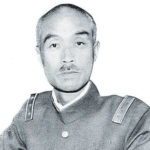
The subsequent operation, however, was a disaster. Unlike Yoshikazu Nishi, Tojo—who would go on to serve as Japanese Prime Minister during most of World War II—was a staunch infantry traditionalist, with no intention of experimenting with tank-centered doctrines. Ignoring repeated protests from 1st Independent Mixed Brigade commander Major General Koji Sakai, Tojo broke up the brigade’s tank and infantry battalions to reinforce other infantry units—nullifying the very purpose of a concentrated armored formation. Sakai repeatedly found his brigade stripped bare, with just a single engineer company at his command. That Sakai dared to curse his Imperial Japanese Army Academy senpai as a “stupid moron”—an astonishing act given Japan’s strict culture of politeness and respect—was understandable.
Exacerbating the situation, most infantry commanders of armored units did not know how to effectively employ their vehicles. Even in an infantry-support role, the 1st Independent Mixed Brigade performed poorly. A post-battle analysis by the Chiba Army Tank School pointed out that during Operation Chahar and the subsequent westward offensive further inland into Shanxi Province, armored units were often “committed with insufficient preparation, in wet and muddy conditions, without artillery support or coordination.”
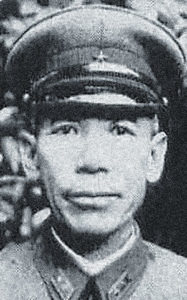
Chinese opposition forces, including those from the elite Central Army, possessed much better anti-tank capabilities than the local warlord armies the Japanese army had previously faced. During the Battle of Xinkou in October 1937, the 5th Division commander ordered his 4th Tank Battalion to frontally assault entrenched Chinese anti-tank positions at Yuanping. In that fateful charge, Chinese troops firing German-made 37mm Pak 35/36 anti-tank guns massacred the battalion’s thinly armored light tanks, killing three of the five company commanders—among them, rising star Shunkichi Hyakutake. (His colleague Isao Shigemi fared slightly better, living through the war and rising to the rank of major general, until he drove his tank on a suicide charge against the Americans during the Battle of Luzon in 1945.)
Although Tojo and his fellow infantry officers were mainly to blame for the brigade’s awful performance in northern China, the army considered its combined-arms warfare experiment a failure. In August 1938, the army withdrew most of the 1st Independent Mixed Brigade’s tanks, effectively disbanding the unit.
Still, Japan’s armored force continued to expand, with Tomio Hara and his team designing newer and heavier tanks. But there was no more serious talk of concentrated tank formations; the fate of the armored force as a dispersed and subordinate support arm was sealed—a result many infantry generals welcomed.
As with most Western nations, Japan’s greatest obstacle to raising an armored force was not a lack of resources or foreign sanctions, but skepticism and opposition from traditionalists within its own army who neither understood innovation nor wanted to see a new branch of arms competing against their own. In the West, however, armored forces eventually managed to redeem themselves as the major component of modern tank-infantry-artillery combined arms. In Japan, that redemption occurred much too late.
From 1938-1942, most Japanese tank units operated under the command of traditional infantry divisions. Occasionally the army loosely organized multiple tank regiments and a limited number of infantry and artillery units into sensha dan, or tank groups, but they were neither permanent nor independent. Instead they functioned more like operational reserve pools, with units dispatched to the front whenever the infantry required a large mobile force.
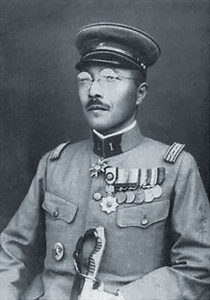
Only after suffering a humiliating May-September 1939 defeat by General Georgy Zhukov’s Red Army at Nomonhan—known to the Soviets as the Battle of Khalkhin Gol—and then witnessing the destructive power of the German Blitzkrieg in Western Europe in May-June 1940 did the Japanese again contemplate combined-arms mechanization. In April 1941, the army set up its Mechanization Headquarters, dedicated to the study and implementation of such warfare. On June 24, 1942, it formed three tank divisions in northern China. On July 4, the 1st and 2nd Tank divisions combined with the elite Demonstration Tank Brigade to form the Mechanized Army in Manchuria. It seemed Japan was finally ready for armored warfare.
Reality, however, did not bear that out. Each tank division was to have four tank regiments, one infantry regiment, and one artillery regiment, with various specialized units (all mechanized) added on. But the divisions never received enough armored carriers or trucks; some regiments were forced to rely on horses for transport. At best, they could be considered only semi-motorized. With the signing of the Soviet-Japanese Neutrality Pact on April 13, 1941, and the attack on Pearl Harbor just under eight months after that, the Japanese army had lost production priorities to its archrival, the Japanese navy.
Nor could Japanese tanks hold their own against their Allied counterparts. The Type 97-Kai Shinhoto Chi-Ha, the heaviest tank available for the divisions, weighed 15.8 tons, had a high-velocity 47mm gun, and only about an inch of armor at its thickest. By comparison, an American M4A3 Sherman medium tank weighed 33 tons, had a 75mm main gun, and at least 2.5 inches of frontal armor (see below “Were the Japanese Terrible Tank Builders?).
With a land war against the Soviet Union temporarily out of the question and the Sino-Japanese conflict bogging down into a stalemate, there was no longer the demand for large armored formations in mainland Asia that there had been in the 1930s. Before long, the army pulled regiment after regiment from the tank divisions to reinforce the southern theaters, eventually disbanding the Mechanized Army altogether on October 30, 1943. Furthermore, Indochinese jungles and Pacific islands were naturally unsuitable for large-scale armored operations, and the relative small number of tanks made Japan’s armored force once again an infantry support arm.
The Japanese did have two operationally successful uses of concentrated armored vehicles during the war: in the December 1941-January 1942 Malayan Campaign and April-December 1944’s Operation Ichi-Go in eastern and southern China. Although the army also deployed tanks in the Philippines, their performance there was far from successful. As Japan’s military situation deteriorated and fuel supply dwindled, many infantry commanders eventually resorted to using tanks as static artillery pieces and pillboxes.
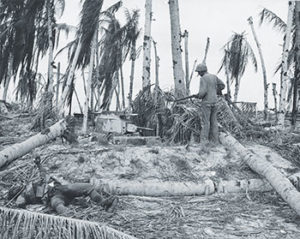
Japanese tanks in Manchuria fared no better. When three Red Army fronts spearheaded by T-34/85 tanks and Ilyushin Il-10 Sturmovik attack planes crossed the Mongolian-USSR-Manchukuo border on August 9, 1945, the hollowed-out Japanese tank divisions essentially evaporated in the face of the Red Army’s massive armored pincer maneuvers.
On the foggy morning of August 18, three days after Japan’s surrender announcement, Colonel Sueo Ikeda led his 11th Tank Regiment’s 40 or so Type 97 and Type 95 tanks on a mad countercharge against the Soviet occupation forces landing on the Japanese island of Shumshu, in the Kuril Islands chain. Little official records are available and it is unclear if Soviet aggression, Japanese desperation, or simply a mutual misunderstanding triggered the battle. The outcome, however, is unambiguous: While the Japanese killed or wounded more than 1,500 Soviet troops, Soviet anti-tank weapons demolished half of the Japanese regiment’s tanks, massacring Ikeda and his men—and the story of Imperial Japan’s armored force came to an unceremonious end.✯
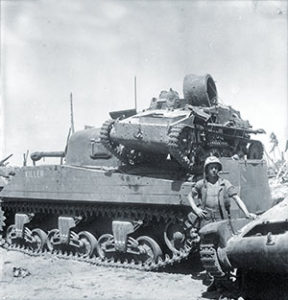
Were the Japanese Terrible Tank Builders?
While small, lightly armored, and undergunned Japanese tanks fared poorly against leading Allied tanks, this disparity did not reflect a lack of Japanese know-how. Most tanks Japan produced during the prewar 1930s were on par in quality with contemporary Western designs.
The majority of Japanese tanks were lightly armored because throughout the first half of World War II, Japan’s primary enemy was poorly equipped China—where the anti-tank capabilities of its infantry troops often amounted to suicide attacks with bundled stick grenades. Aside from a few rare cases, tank-versus-tank combat was also nonexistent, so Japan had no need for thick armor and big guns. Indeed, tanks needed to be light to traverse the mountainous terrain and limited infrastructure of southern China. The Japanese did produce limited numbers of heavier tanks designed to counter the new Allied threats—for example, the Type 3 Chi-Nu, with a 75mm gun. But the army held back that
precious equipment in mainland Japan, along with the elite 4th Tank Division raised in 1944, for Hondo-Kessen—the “final battle for the home islands” that never came. —Jiaxin “Jesse” Du
This story was originally published in the March/April 2017 issue of World War II magazine. Subscribe here.





